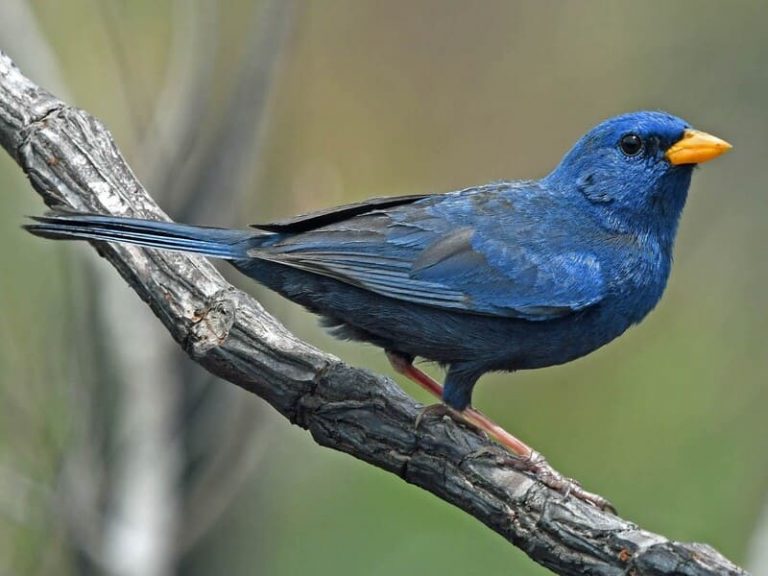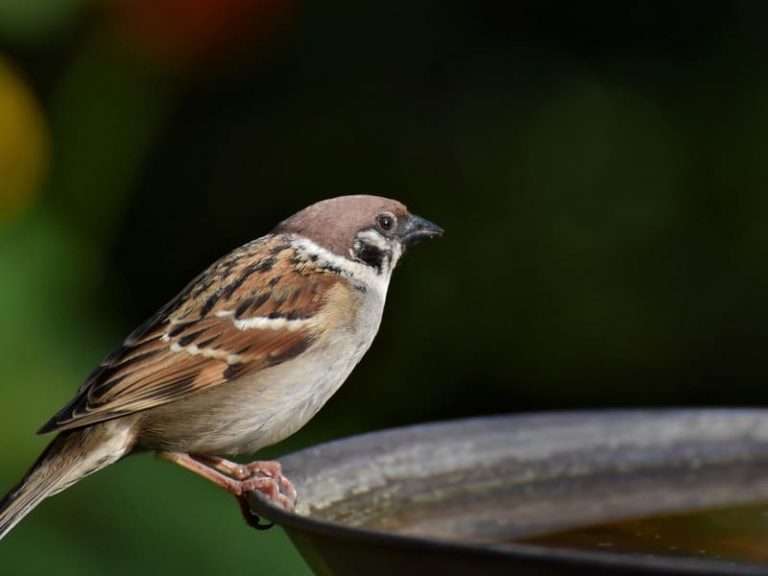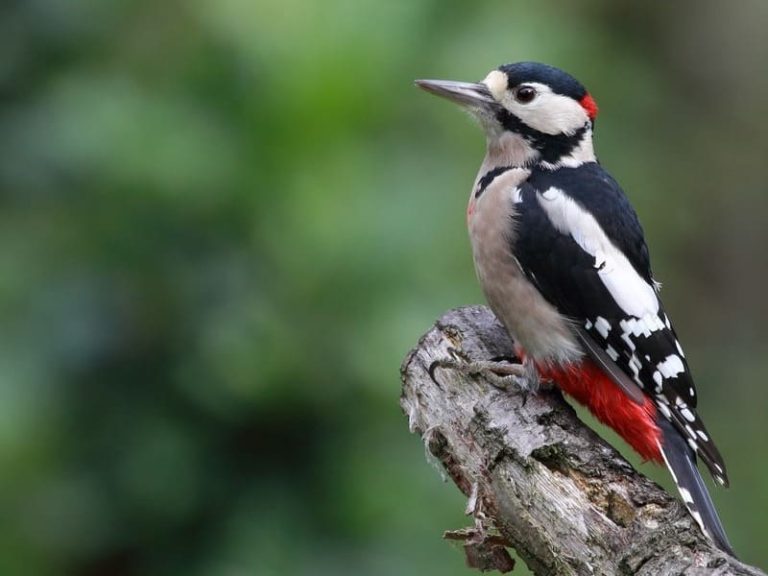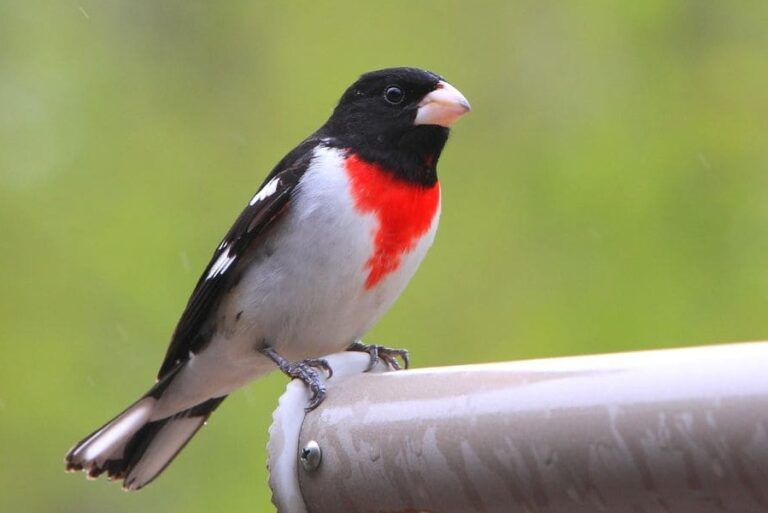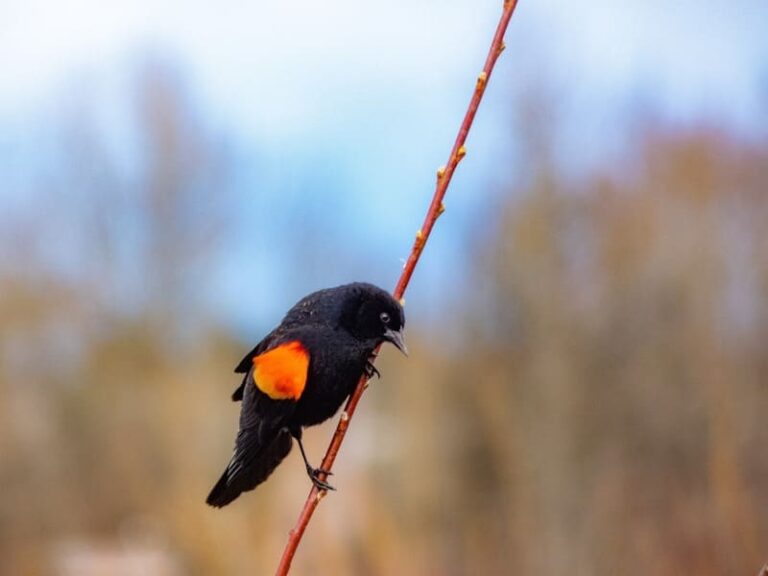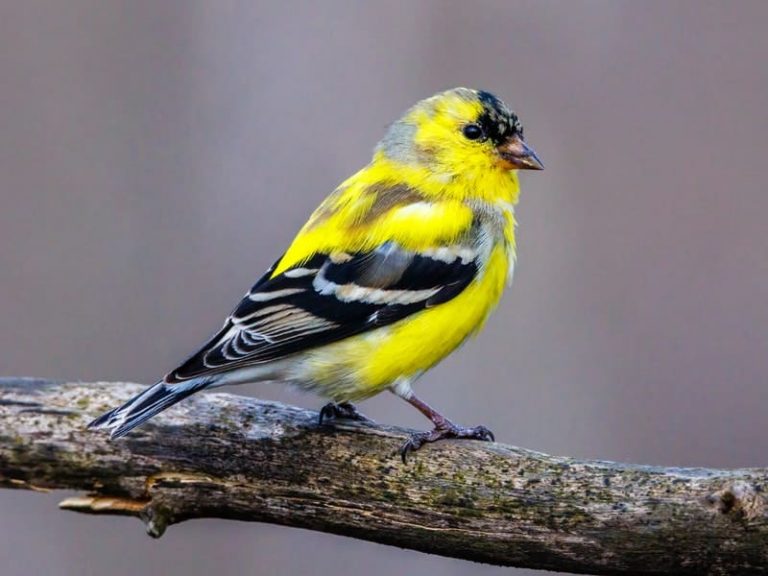13 Small Birds with Black and White Heads
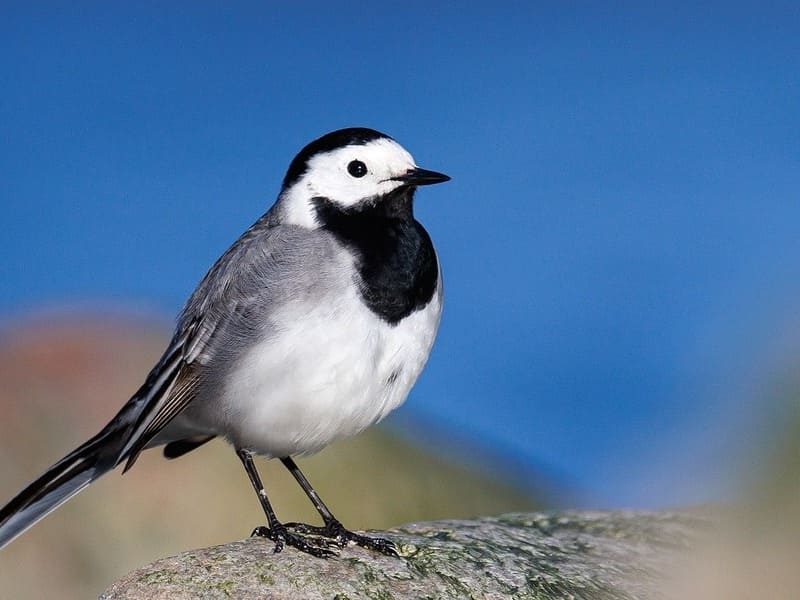
Birds represent a variety of color patterns ranging from bright multicolored plumage to simple black and white contrast. All these birds show beauty in their unique ways. Several small birds with black and white heads are prominent features of the wilderness and populated areas.
You may witness these birds in your backyard or the wilderness alike. Whenever you come across a bird with similar features, the first thing you think would be the bird’s name. This article is compiled to help you remember the names and different features of 13 small birds with black and white heads. Let’s find out what this article has to offer.
13 Small birds with black and white heads
Watching birds in your garden is the perfect leisure time activity. It Introduces you to the fascinating features and behaviors of different bird species. You can also keep a record of all the birds visiting your garden. But it is only possible if you remember how different birds look. So, follow the list of 13 small birds with black and white heads to equip yourself with the necessary bird knowledge.
1. White-Throated Sparrow
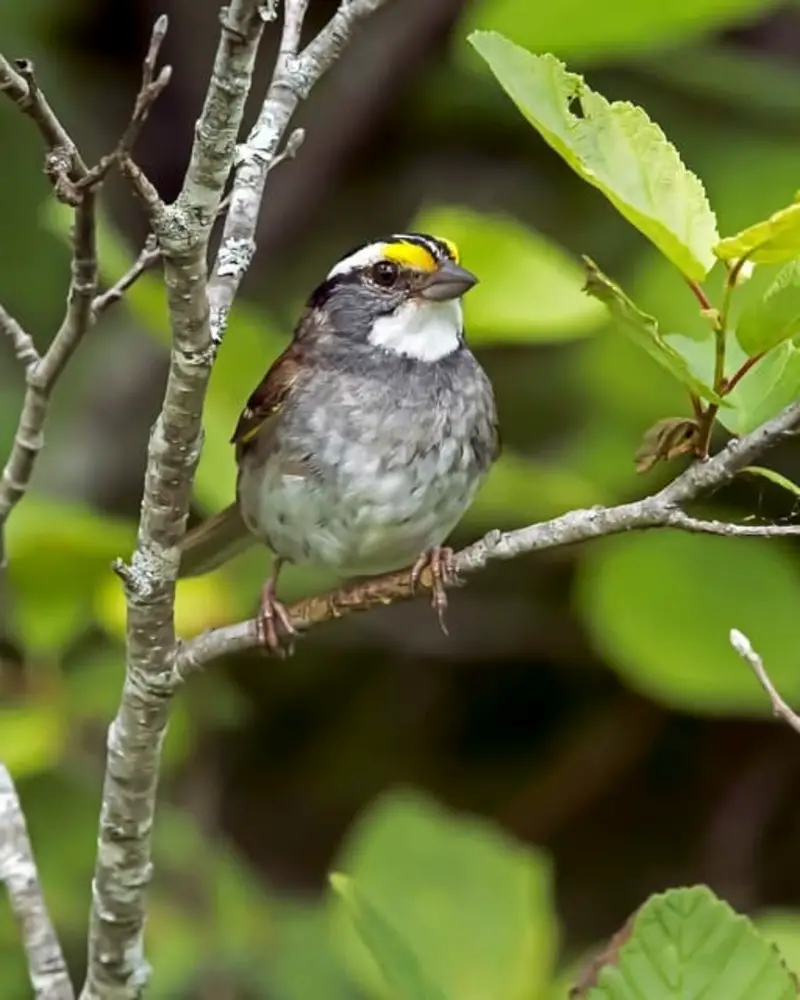
- Length: 6.5 to 7.1 inches
- Wingspan: 7.8 to 9.1 inches
- Weight: 0.6 to 0.8 oz
- Diet: Omnivorous, seeds and insects.
- Egg Color: Greenish blue or pale blue speckled with purplish, lilac, and chestnut.
- Most Prominent Feature: Yellow spot at the forehead.
The white-throated sparrow has a unique head coloring. The head is lined with black and white stripes that start from the forehead and go behind until the upper back. It has a whitish patch at the throat and grayish cheeks and chest.
The remaining plumage is dark brown on the back and wings with black and white spots and light brown underparts. The most striking feature is a yellow patch on the forehead. The white-throated sparrow eats insects in summer and small fruits and berries in winter.
Blackpoll Warbler
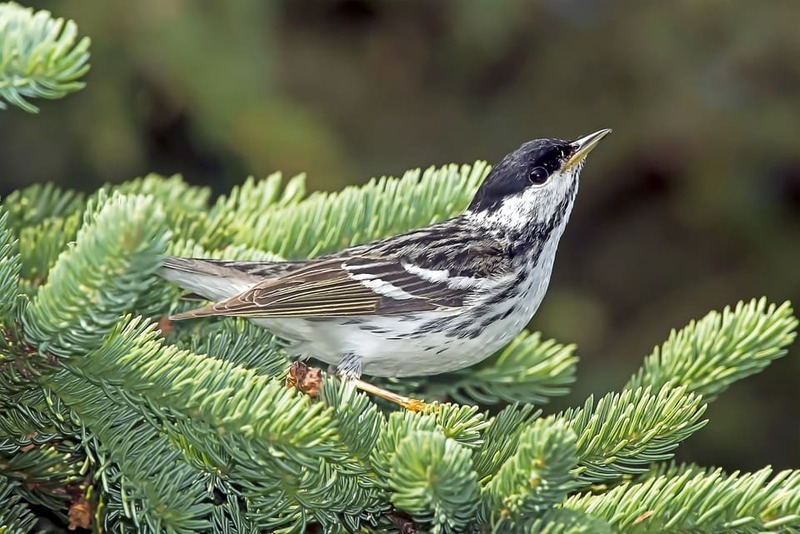
- Length: 4.5 to 5.5 inches
- Wingspan: 8.0 to 9.1 inches
- Weight: 0.4 to 0.5 oz
- Diet: Omnivorous, mostly insects and fewer seeds and berries.
- Egg Color: Creamy buff and greenish with brown speckles.
- Most Prominent Feature: Black cap
The blackpoll warbler has a slight tan-colored beak and yellowish-orange legs. The male blackpoll warbler shows black and white coloring on its head. The head can be divided into two parts: the part above the eyes is dark black, and the part below the eyes is white. A black and white necklace with a black part going down the chest. The bird has white cheeks, chest and belly. The blackpoll warbler primarily eats insects and turns toward berries and small fruits in summer. The female birds do not have black and white heads.
White Wagtail
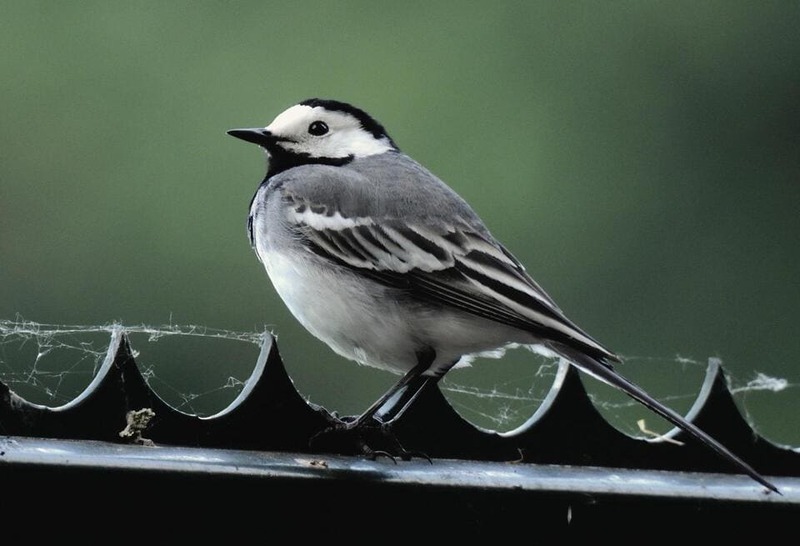
- Length: 6.5 to 7.5 inches
- Wingspan: 10.0 to 12.0 inches
- Weight: 0.6 to 0.8 oz
- Diet: Omnivorous, eats aquatic insects and some seeds.
- Egg Color: Grayish to blue-white
- Most Prominent Feature: White face, small black cap.
The bird has a small bill compared to its long tail and legs. The white wagtail has a white area around the eyes with a spotless white face. The chin is dark black colored with black color fading away down the throat.
The back of the bird is grayish colored, while the underpart is white. The wings and tail are lined brown at the edges with some degree of white and black lines. Their diet consists of insects such as crane flies, beetles, dragonflies, mayflies, caterpillars, moths, spiders, earthworms, small fishes, and some seeds.
Black-capped Chickadee
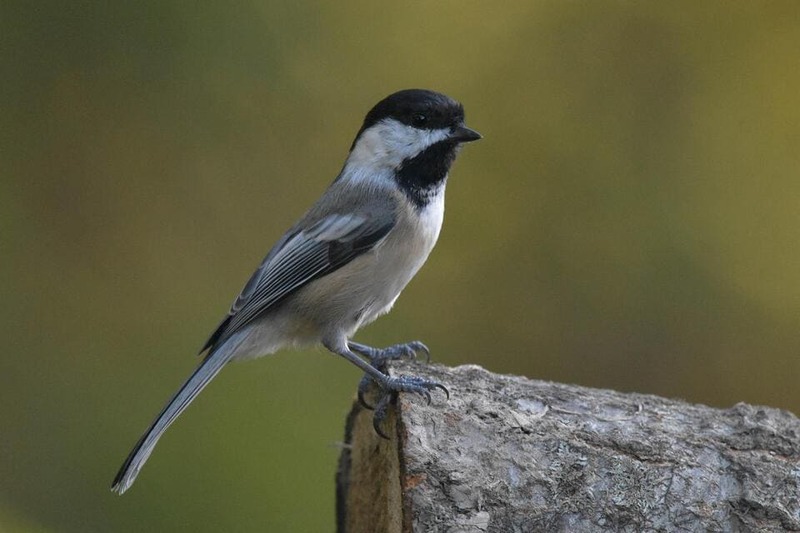
- Length: 5.5 to 5.9 inches
- Wingspan: 7.5 to 8.3 inches
- Weight: 0.4 to 0.5 oz
- Diet: Omnivorous. Insects, seeds, and berries
- Egg Color: White, spotted with reddish-brown spots.
- Most Prominent Feature: Black cap and black throat.
The black-capped chickadee is another species of a small bird with black and white heads. It has a tiny beak with a dark black cap and throat. The space between head and throat is white from cheeks to upper back behind the head. The underparts are creamy-white from breast to belly, with rumps turning a little gray.
Its eyes are difficult to see due to the solid black cap. The black-capped chickadee eats insects in summer. The diet consists primarily of leftover berries and small fruits in winter.
White-crowned Sparrow
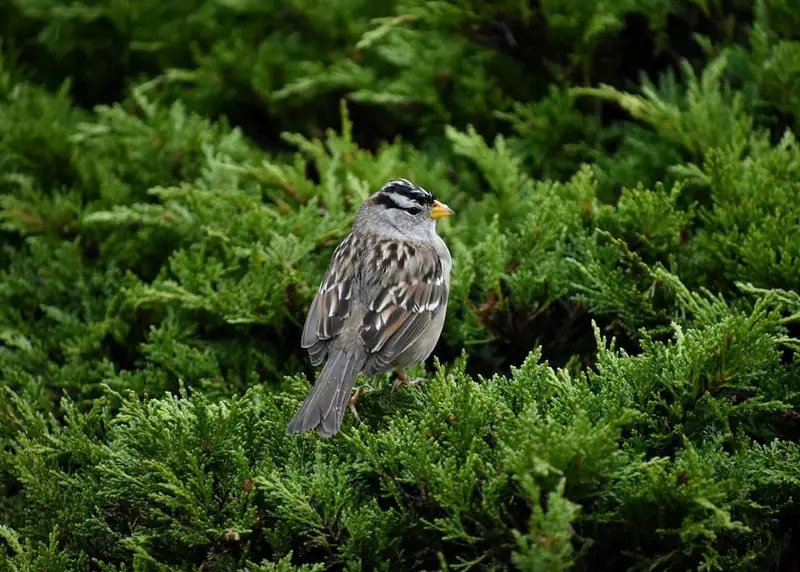
- Length: 5.2 to 6.3 inches
- Wingspan: 8.4 to 9.4 inches
- Weight: 0.8 to 1.0 oz
- Diet: Omnivorous. Seeds of grasses and weeds along with insects.
- Egg Color: Creamy white spotted with a reddish-brown color.
- Most Prominent Feature: Black and white vertical divisions on the head.
The white-crowned sparrow has a small yellow bill and dark brown legs. The head of the bird has dark black and clear white horizontal lines.
The rest of the plumage is gray and brown colored. The lower body is grayish, while the wings and tail are brown. Their diet consists of small insects and seeds of grass and weed.
Mountain Chickadee
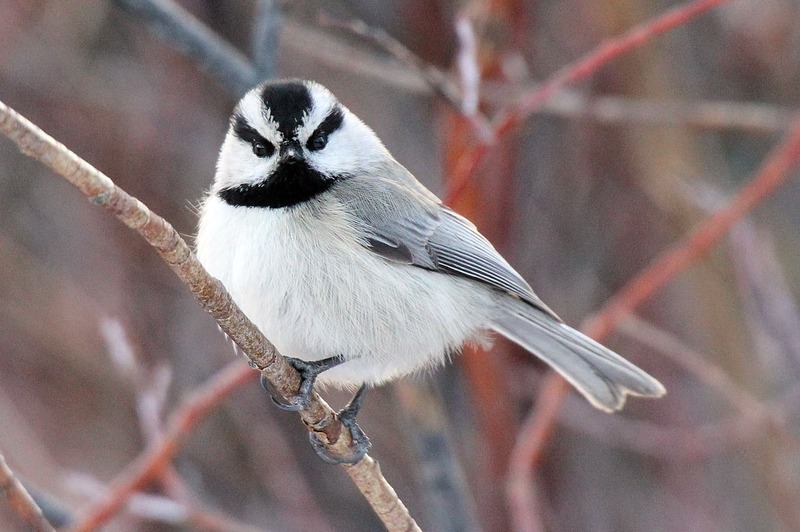
- Length: 4.5 to 5.5 inches
- Wingspan: 6.5 to 7.5 inches
- Weight: 0.3 to 0.4 oz
- Diet: Omnivorous. Mostly insects, berries, and seeds
- Egg Color: Pure white, sometimes red spots.
- Most Prominent Feature: Dark black chin and throat.
The mountain chickadee has a small body with a long tail. The plumage is whitish gray with more white on the underside and more gray on the wings and tail.
The head has stripes of black and white with a small black cap in the center and white stripes around then again black stripes followed by white cheeks and the remaining face. The most prominent feature is a dark black throat with a curvy shape.
Carolina Chickadee
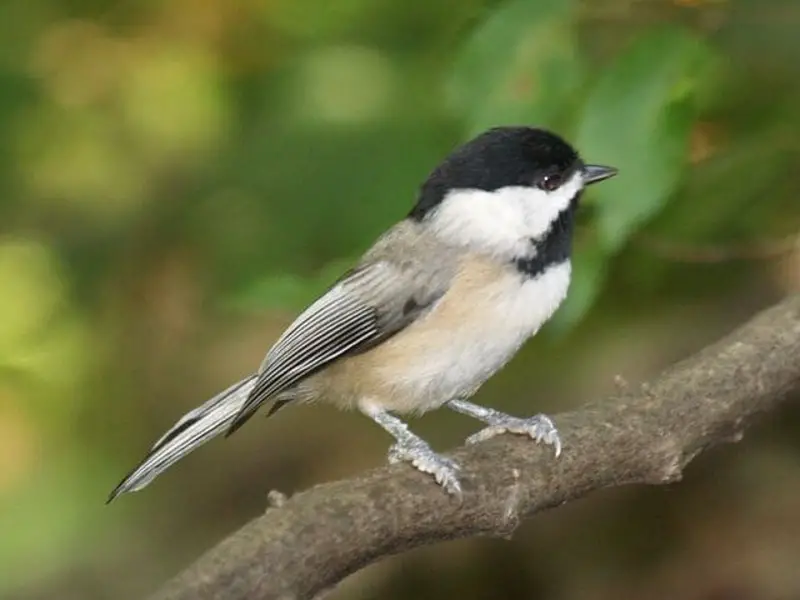
- Length: 4.0 to 4.7 inches
- Wingspan: 6.5 to 7.9 inches
- Weight: 0.3 to 0.4 oz
- Diet: Omnivorous. Mostly insects and spiders, but they also eat berries and seeds in winter.
- Egg Color: White, but sometimes creamy white speckled with reddish-brown spots.
- Most Prominent Feature: Dark black cap and throat.
The Carolina chickadee is a small songbird with small legs and an even tinier beak. The head is covered with a dark black cap, and the throat is also black.
The face is white, starting from the beak and turning wider while going back to the head. The underparts are white, while the wings and the tails are soft grays. The bird eats insects in summer while adding some berries and seeds to their diet in winter.
White-breasted Nuthatch
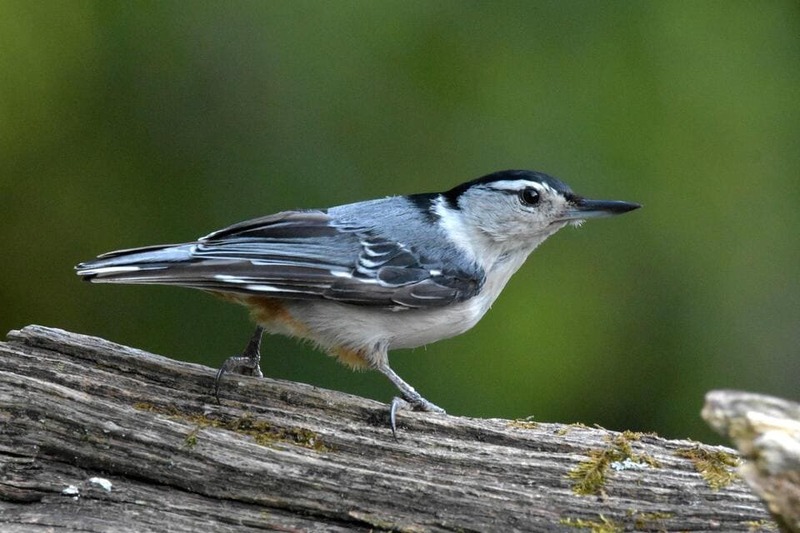
- Length: 4.5 to 5.5 inches
- Wingspan: 9.5 to 10.6 inches
- Weight: 0.8 to 1.1 oz
- Diet: Omnivorous. Mostly insects but also seeds in winter.
- Egg Color: Creamy to pinkish-white with reddish-brown, purple, or gray spots.
- Most Prominent Feature: Chestnut-colored patch below the tail.
The white-breasted nuthatch is a small songbird with a pointed bill. You can see the bird hanging or sitting upside down on the tree trunks.
It has a dark black cap on the head that goes all the way behind the head and down on the sides of the upper back. The face, throat, and lower belly are white with a chestnut-colored patch below the tail. The back, wings, and tails combine gray and black. The diet of the bird is insects and seeds.
Black Crested Titmouse
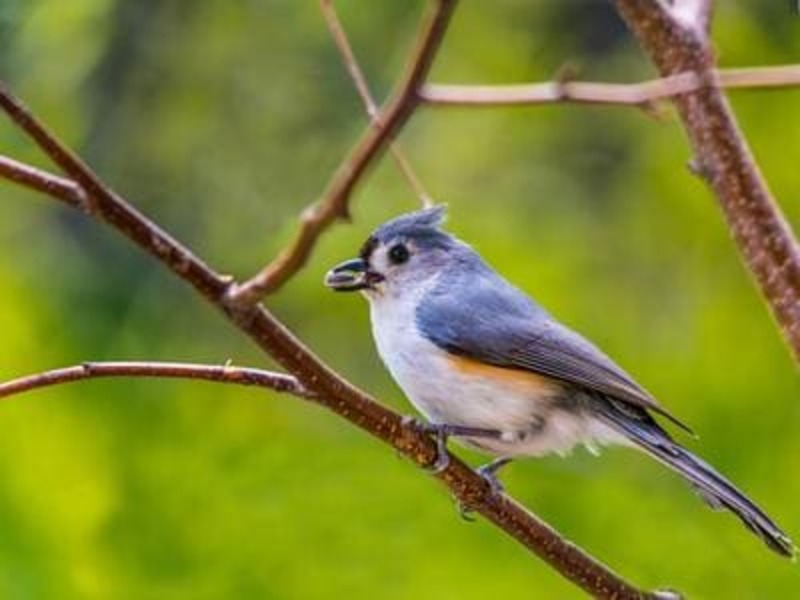
- Length: 4.8 to 5.9 inches
- Wingspan: 8.5 to 9.8 inches
- Weight: 0.5 to 0.7 oz
- Diet: Omnivorous. Insects and berries alike.
- Egg Color: White with reddish spots.
- Most Prominent Feature: Dark black crest.
The first thing that fascinates while looking at a black-crested titmouse is its high-rising black crest. The bird has a small black bill with bluish legs. The face, throat, and underparts are dull white, while the wings, back, and tail plumage are dark gray colored.
The diet of the black-crested titmouse includes small insects and seeds. It rarely visits your bird feeders because it stays in the wild mostly.
Downy Woodpecker
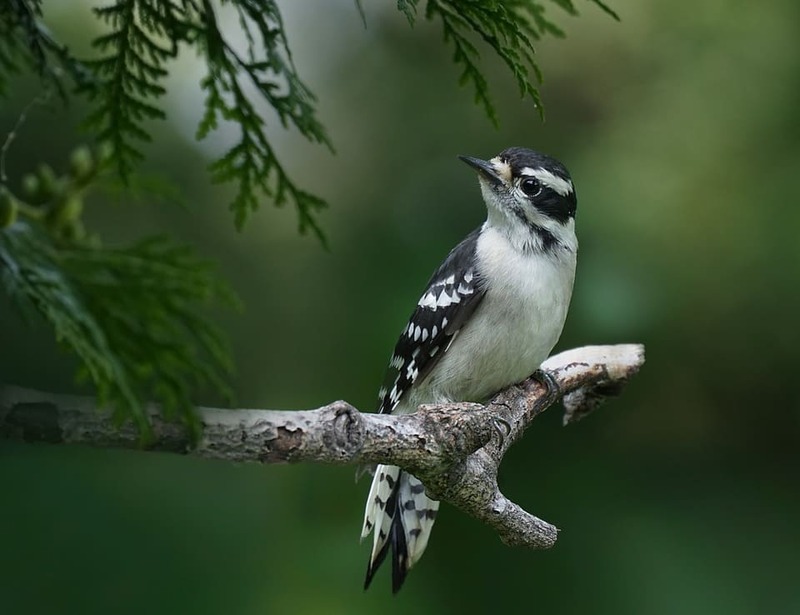
- Length: 5.6 to 6.7 inches
- Wingspan: 10.0 to 11.8 inches
- Weight: 0.8 to 1.0 oz
- Diet: Omnivorous. Mostly insects but eat some berries and seeds too.
- Egg Color: Spotless white.
- Most Prominent Feature: Red spot behind head.
The male downy woodpecker has a bright red patch behind the head, making it unique among other woodpeckers. The bill is small and pointy, while the head has black and white stripes.
The back and underparts are white, while the wings are black with white spots. It has a long black tail. The diet includes insects and some seeds plus berries.
Black and White Warbler
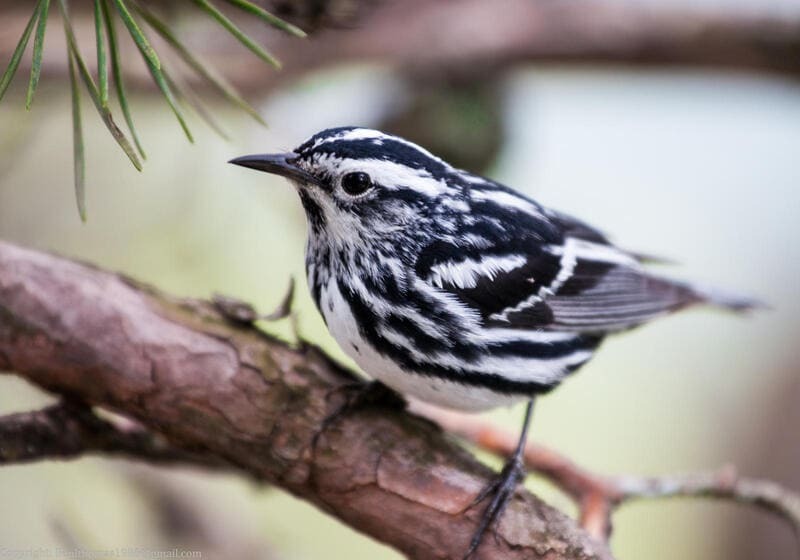
- Length: 4.5 to 5.1 inches
- Wingspan: 7.8 to 8.7 inches
- Weight: 0.4 to 0.5 oz
- Diet: Carnivorous. Eat all types of insects.
- Egg Color: Creamy, pale bluish, or greenish-white with lavender or brown speckles.
- Most Prominent Feature: Horizontal black and white lines throughout the body.
The black and warbler are different from most birds due to their habit of nesting on the ground. It makes nests at the base of large tree trunks.
The plumage is black and white stripes throughout the body, including the head. The bill is quite long, and the tail is short. The head of the black and white warbler seems flat on the top. They eat insects only because they are predatory birds.
Hairy Woodpecker
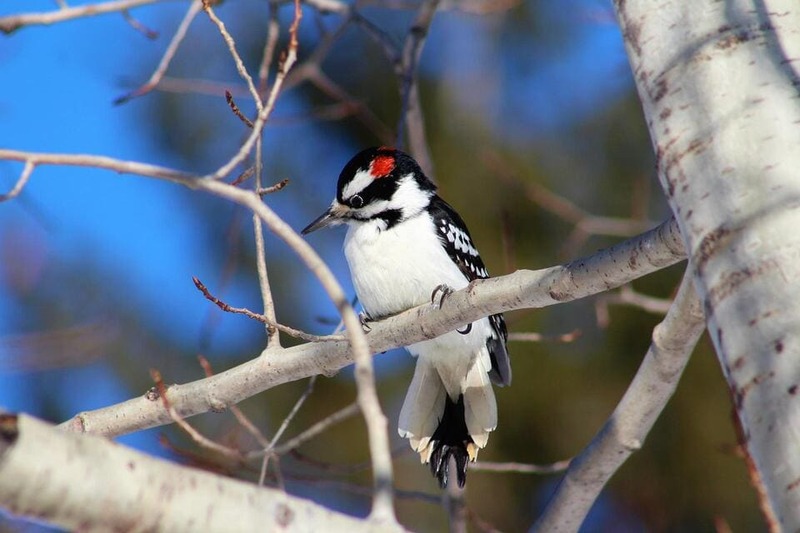
- Length: 9.5 to 10.2 inches
- Wingspan: 15.0 to 16.1 inches
- Weight: 3.0 to 3.4 oz
- Diet: Omnivorous. Mostly insects, including some seeds and nuts.
- Egg Color: Completely white.
- Most Prominent Feature: Conical face with a long beak.
The hairy woodpecker looks similar to a downy woodpecker. These birds share the same black and white striped plumage, including the head. The red patch on the back of the head is also quite identical.
However, the most visible difference is its size and longer bill. The hairy woodpecker is much larger than a downy woodpecker. The diet includes insects, seeds and berries.
Black Skimmer

- Length: 18.5 to 19.7 inches
- Wingspan: 40.0 to 45.3 inches
- Weight: 10.5 to 12.9 oz
- Diet: Carnivorous. Small fish, including some shrimps and small invertebrates.
- Egg Color: Pale blue with numerous dark brown spots
- Most Prominent Feature: Long beak with the orange upper part.
It is not tiny, as the list suggests, but it needed an honorable mention due to its beautiful black and white head. You will not witness it at your bird feeder because a black skimmer is a seabird.
The head is equally divided into black and white, as does the whole body. The lower parts are white, while the upper body is black. They have a long beak which is half black and half orange. It mainly eats small aquatic animals like fish and shrimps.
What type of bird has a black and white head?
Many birds have black and white heads ranging from small sparrows to large seabirds. Most of the birds are native to North America, and you can see them hanging around the bird feeders in your garden. However, some prefer to stay in the wilderness or on the shores to spend their life hunting for food. Refer to the list above to better understand the birds with black and white heads.
What is the name of the little black and white bird?
The Carolina chickadee is one of the smallest birds with a black and white head. Its body is just a few inches long, but it has distinctive black and white stripes on the head to leave a mark on the viewer.
What is a sparrow with a white head?
The white-crowned sparrow has a white crown on its head to qualify it to the list of small birds with black and white heads. It is a beautiful bird with a slight yellow beak and brown legs.
Final Words about small birds with black and white heads
The list of 13 small birds with black and white heads doesn’t have all the small birds. It has included some large birds, too, due to their beautiful plumage and black and white heads. So, go through the list to understand the different features of these beautiful birds so you can identify them while they visit your backyard.
Interesting articles:

